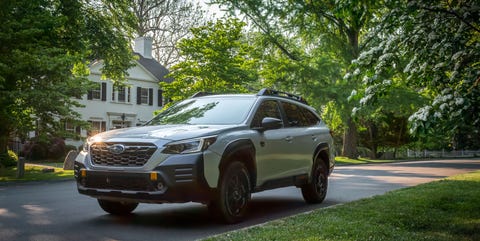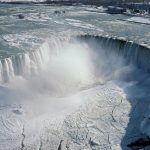

A Subaru Outback is just as natural parked by a million-dollar beach home in Connecticut as it is traversing a campsite in Mount Hood. Most owners, no matter where they live or how much they make, prefer the Outback’s practicality, comfort, and affordable cost over a rock-biting, trailblazing hell of a time. The Outback Wilderness is the opposite. This is Subaru’s version of a Raptor—lifted and factory-kitted to tackle more abuse on tough terrain. We drove one near all those pretty Connecticut homes, and while the Wilderness may seem like an appearance package, it’s entirely purposeful
The regular Outback sits 8.7 inches off the ground, which is more than many SUVs and full-size pickup trucks. The Wilderness raises its cladded body to 9.5 inches, a tenth higher than a Tacoma TRD Pro. It won’t bite off the biggest boulders, but its breakover and departure angles are about equal to the Toyota’s. And on the street, it looks mean.
Subaru equips several models with the Yokohama Geolander, but this is a genuine set of all-terrains. These tires have tread compounds that bite harder in dirt, mud, and on loose gravel. They trade some on-road grip and are generally noisier, though this particular Yokohama is among the more street-friendly A/T tires. We love the contrast of the white-letter sidewalls against the 17-inch gloss black wheels.
An Outback hallmark since 1995, plastic body cladding is an off-roader’s critical armor against brush and branches that would scratch uncovered paint. On the Wilderness, the cladding extends to the headlights and frames the exclusive mesh grille. Below are two LED foglights in a Gatling-gun pattern, orange caps for the integrated tow hooks, and a metal skidplate to protect the underbody.











Leave a Reply